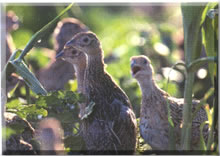 |
 |
||||||||||||||||||||||||||||||||||||||||||||||||||||
|
| |||||||||||||||||||||||||||||||||||||||||||||||||||||
 |
Focus on Pheasants
Lake: Harlan County Lake, NE Partners: USACE; Nebraska Game and Parks Commission; Pheasants Forever; USDA Natural Resource Conservation Service Partnership Type: Cooperating Association Corps POC: Jim Brown, Natural Resource Specialist, Harlan County Lake, Kansas City District Story: In response to continued declines in pheasant numbers statewide, the Nebraska Game and Parks Commission and Pheasants Forever have developed a statewide initiative to address this problem. The activities and projects identified were developed to serve the specific goal of delivering tangible benefits to the greatest possible number of upland game birds over the next ten years, while maximizing educational opportunities for landowners and other stakeholders regarding the habitat needs of pheasants. A focus area approach was recommended, whereby habitat management activities are concentrated in specific areas. Three types of focus areas were identified: 1) high-use private lands, 2) public lands, and 3) community-directed programs. Harlan County Lake was chosen to represent one of three public land focus areas throughout the state due to the Corps past support for wildlife initiatives and its sustained cooperation with the two agencies. Projects emphasizing the creation of pheasant nesting and brood-rearing habitat are recommended. A mosaic of weedy, diverse grasslands are best suited to provide these habitat types. Management activities will include warm-season grass interseeding, control of invasive species, legume interseeding, prescribed burning, removal of encroaching trees, and the creation of old fields. Flexibility in project design will be needed to reach a consensus amongst numerous stakeholders. Focus on Pheasants will not in and of itself solve the pheasant decline issue. It is designed to create a turnaround in several key areas and to demonstrate how, and to what extent, habitat needs to be changed to accommodate a positive response by pheasants. |
|
|||
|
| |||||
